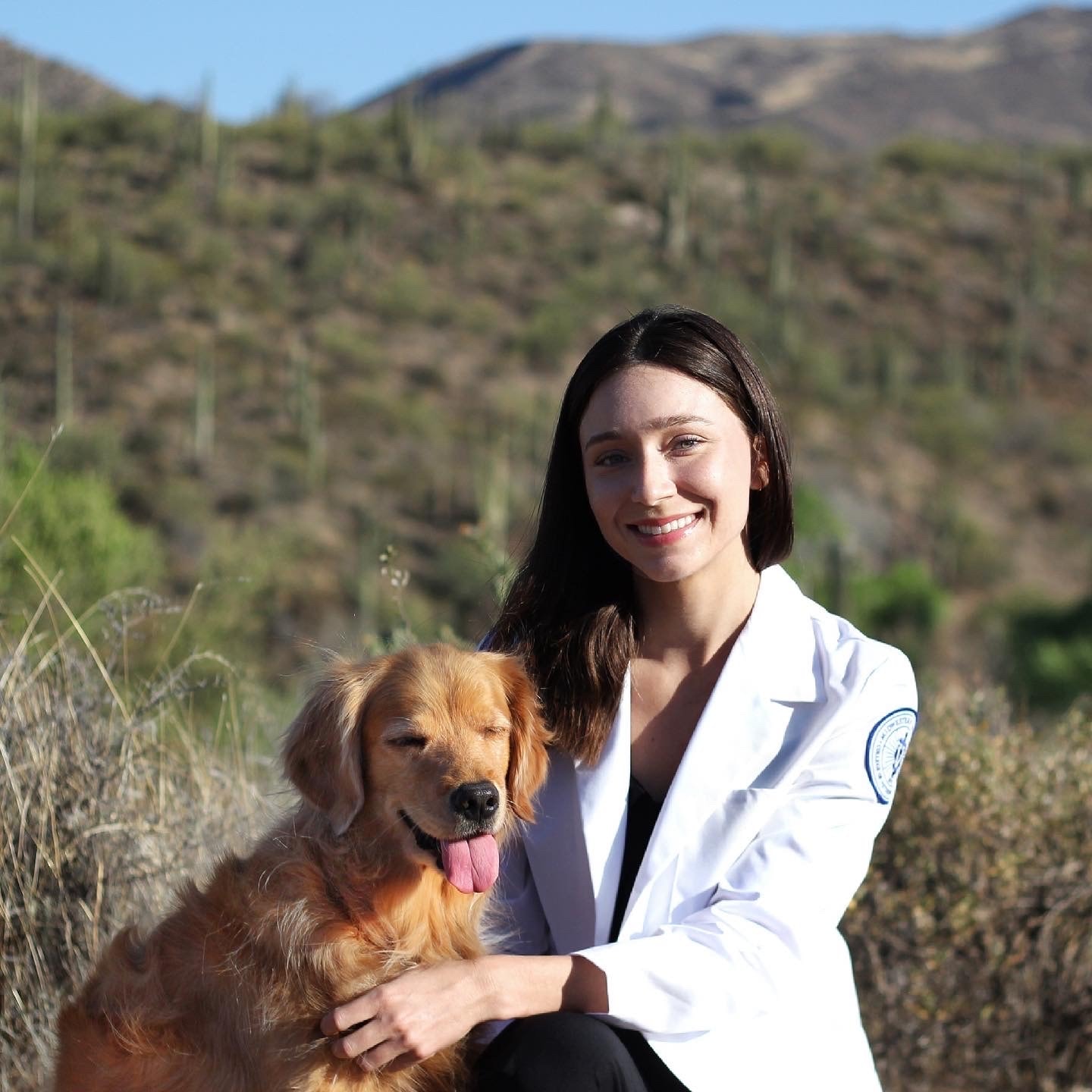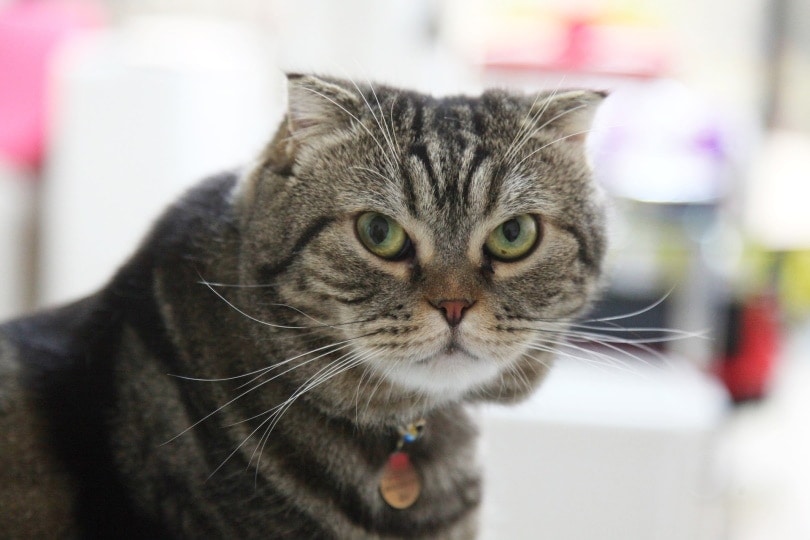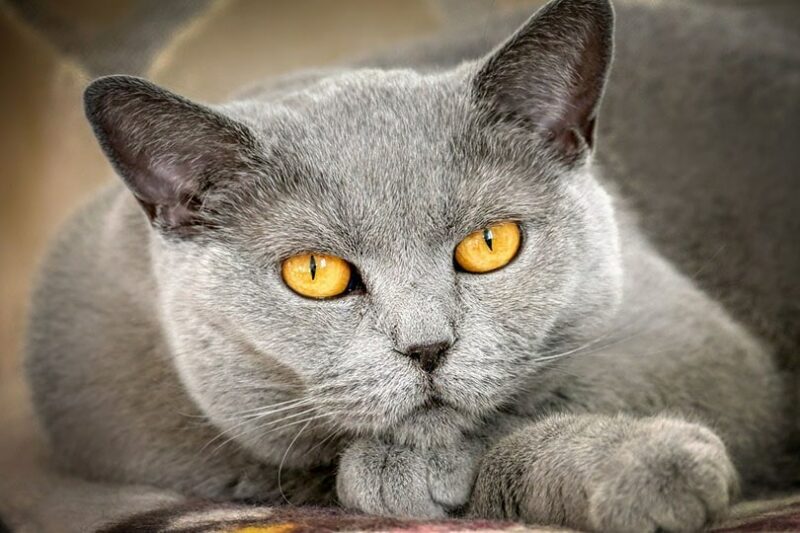How to Tell if Cat Mating is Successful: Vet-Reviewed Signs & FAQ

Updated on
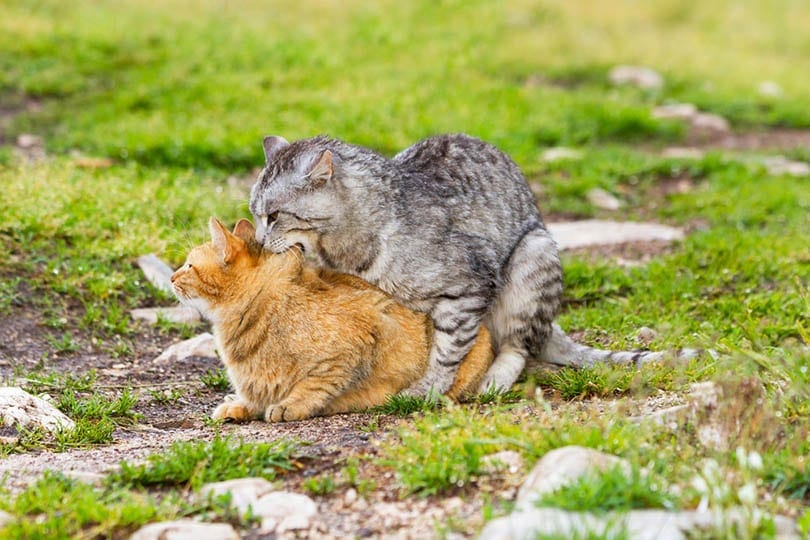
If you’re new to breeding your cats, it can be a little tricky at first to figure out when your cats are ready to mate and whether mating is successful. A successful mating can be detected when the estrus ends and you begin to see early signs of pregnancy.
Before we get to these signs, it can be helpful to briefly review the heat cycle in cats and how feline conception works. Read on to learn more!
Heat Cycle in Cats
Both male and female cats reach sexual maturity at around 4–6 months, but breeding is most likely to be successful (and healthiest for the cats) when they are fully grown at about 1 year of age or older and at least 5 pounds. Mature intact male cats are often called toms, while intact female cats are called queens.
Toms can breed year-round, while queens are subject to an estrous cycle or heat cycle that determines when they are receptive to males. Female cats go into estrus (also sometimes called “in heat”) every 12–25 days. Estrus can last anywhere between 2–19 days. Female cats are seasonally polyestrous, meaning they have multiple estrous cycles during the breeding season.
Female cats have behavioral and hormone changes during estrus that signal they are ready to mate. In the wild, estrus is influenced by weather and light, stopping during harsh winter months, but many cats experience estrus cycles all year in temperate climates or indoors.
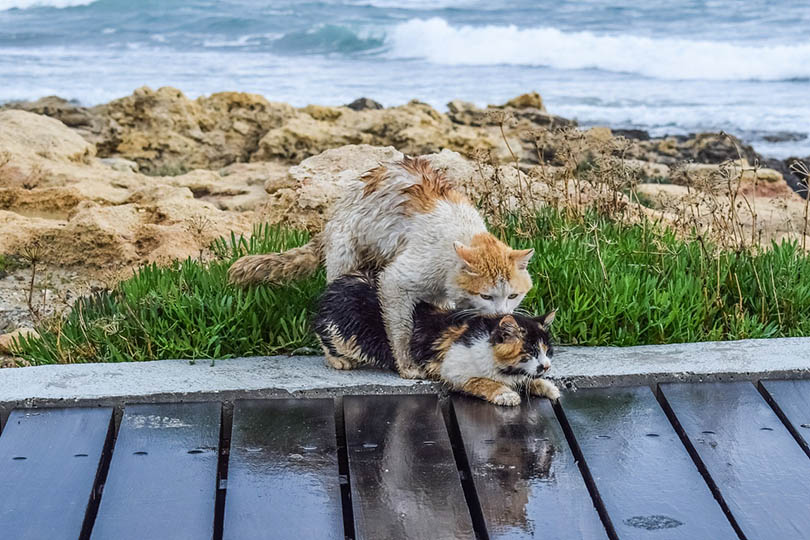
Signs Your Queen is in Estrus
During estrus, your cat’s behavior will change as she prepares for mating. One of the most common signs of estrus is unusually friendly, affectionate behavior. A cat in estrus might rub up against people, seek physical affection, or other cats. Many cats have distinctive vocalizations that they make only in estrus.
During estrus, queens will also have some physical signs. Female cats may spray a strong-smelling fluid to mark their area during estrus—this spray is distinct from urine. This happens only in estrus.
Finally, your cat may seek out males to mate. If your cat is generally an indoor cat with no males in the house, she might attempt to escape. She might also seek out male cats within your home and make herself available for mating.
Feline Conception
If a queen finds a male partner during estrus, mating will take course several times throughout the estrus period. Queens can mate with multiple toms during one estrus, meaning that kittens in the same litter may be from multiple fathers. In mating, the tom usually mounts the queen from behind and grabs her neck scruff with his teeth during mating. This behavior can make it easy to tell if mating is taking place.
Unlike humans, cats don’t ovulate in every cycle. Instead, mating will induce ovulation, with eggs being released shortly after mating. Multiple mating sessions during estrus will make conception more likely to occur.
If your cat becomes pregnant, you should expect kittens about 60–72 days after mating. Cats give birth in litters of up to 10 kittens, but smaller litters of three to six kittens are more common.
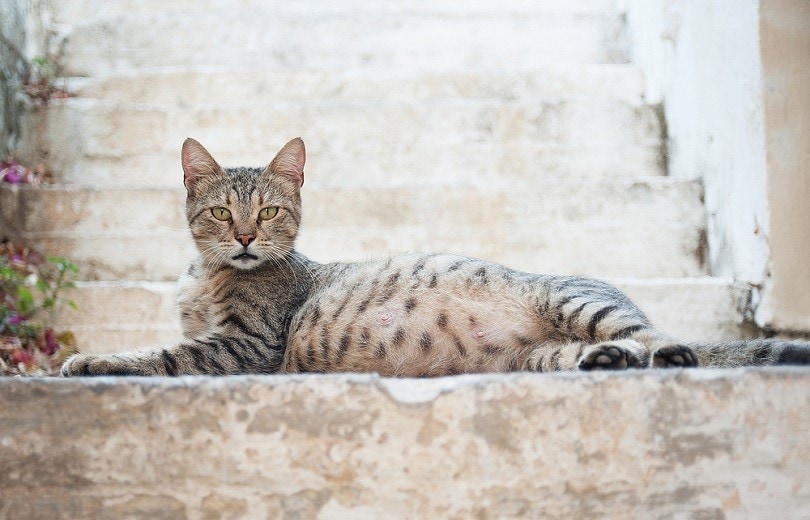
How to Tell if Mating Was Successful
1. Missed estrus
If you’ve been watching your cat’s heat cycles for a while, the first sign that mating has led to pregnancy might be their estrus cycle. Cats generally have a consistent cycle length, so if your cat’s cycle stops suddenly there’s a good chance that your cat is pregnant.
2. Nipples Swell and Pink
Another early sign of pregnancy is a change in nipples. Nipples swell and “pink up” early in pregnancy as they prepare to produce milk. This change will happen about 10–14 days after mating.
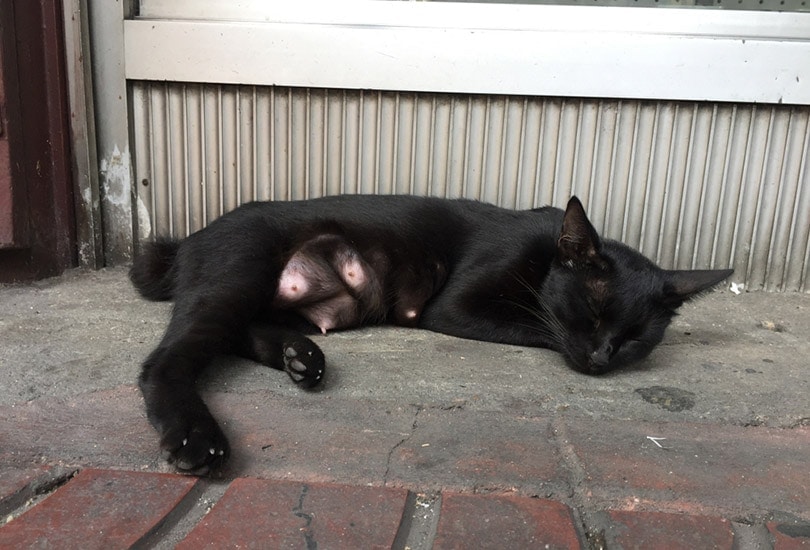
3. Behavioral Changes
During pregnancy, many cats experience behavioral changes. Your cat might have reduced energy, increased appetite, and higher levels of affection. Near the end of pregnancy, queens start seeking out quiet places to give birth.
4. Other Physical Changes
As the pregnancy progresses, you will see other physical changes. Your cat may experience symptoms of morning sickness like vomiting. At about 35 days into pregnancy, your cat’s abdomen should be noticeably swollen.
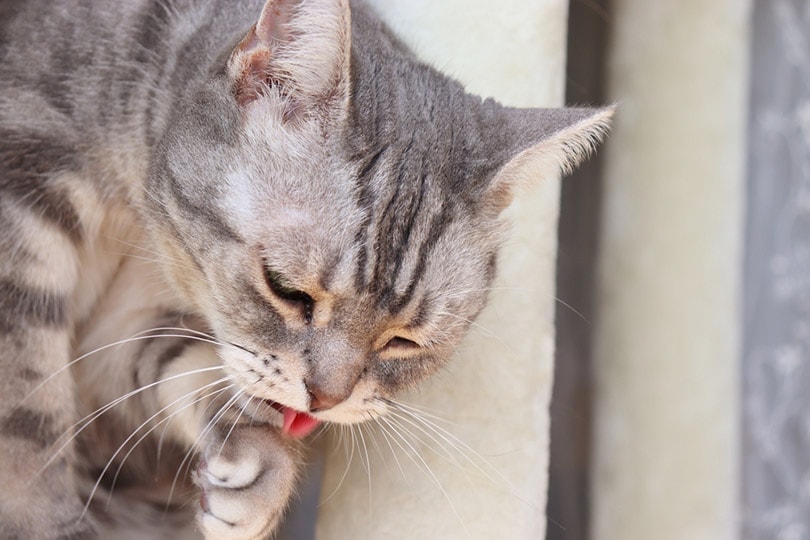
Frequently Asked Questions
When Should I Spay My Cat?
If you plan to spay your cat, there’s no need to wait until after the first estrous cycle. Most vets recommend spaying kittens between 4 and 6 months of age. Spaying your cat is the best way to prevent unwanted litters and serious medical conditions like uterine infections and mammary cancers.
Does Mating Always Result in Conception?
Cats don’t always conceive after mating, but they are more likely to conceive after mating than humans because of how their heat cycle works. Unlike humans, cats generally only mate when in heat. Mating will cause ovulation to happen, making pregnancy much more likely. However, not every mating will result in a successful pregnancy.
Can Cats Become Pregnant Again While Nursing?
It’s a myth that cats won’t go back into estrus while nursing. In theory, cats can bear up to five litters of kittens a year, although this is not common nor healthy for the mother cat. Although cats are less likely to become fertile while nursing, it is best practice to separate nursing mothers from mature toms to prevent unwanted pregnancies.
Veterinary Confirmation of Pregnancy Diagnosis
Your veterinarian can confirm pregnancy diagnosis in a variety of ways:
- Abdominal palpation or feeling for embryonic vesicles within the uterus. This can be done 21–35 days after breeding.
- Abdominal ultrasound is most reliable 25 days after breeding. It is the best imaging modality for determining fetal viability as a heartbeat is easily visible 30 days after breeding.
- Abdominal radiographs or X-ray is another way your veterinarian can confirm pregnancy and it is the best modality for determining litter approximate size.
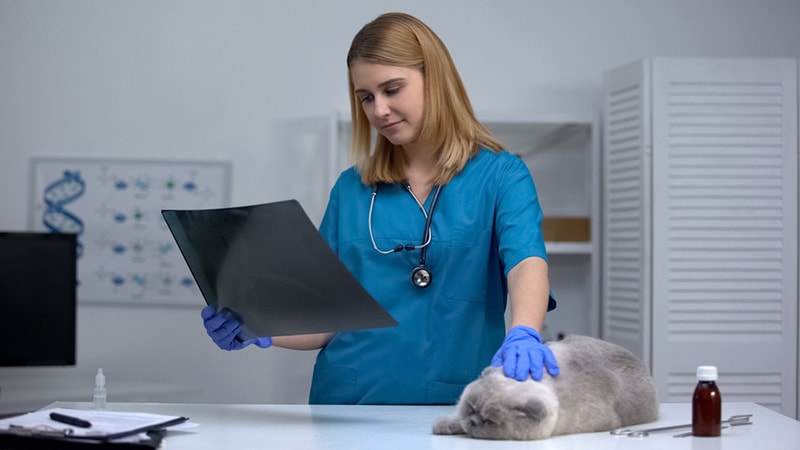
Final Thoughts
It’s generally recommended to spay your cats. However, if you decide to breed your cats, it is important to do so safely and responsibly. Be prepared for the financial costs of cat breeding, especially proper veterinary care to ensure the health and safety of your cat and her kittens. These signs that a mating is successful can help you get started on your journey.
Related Reads:
- How Far Can Cats Fall Without Hurting Themselves?
- How to Tell if Your Cat Is Pregnant? What You Need to Know!
Featured Image Credit: Neonci, Shutterstock
